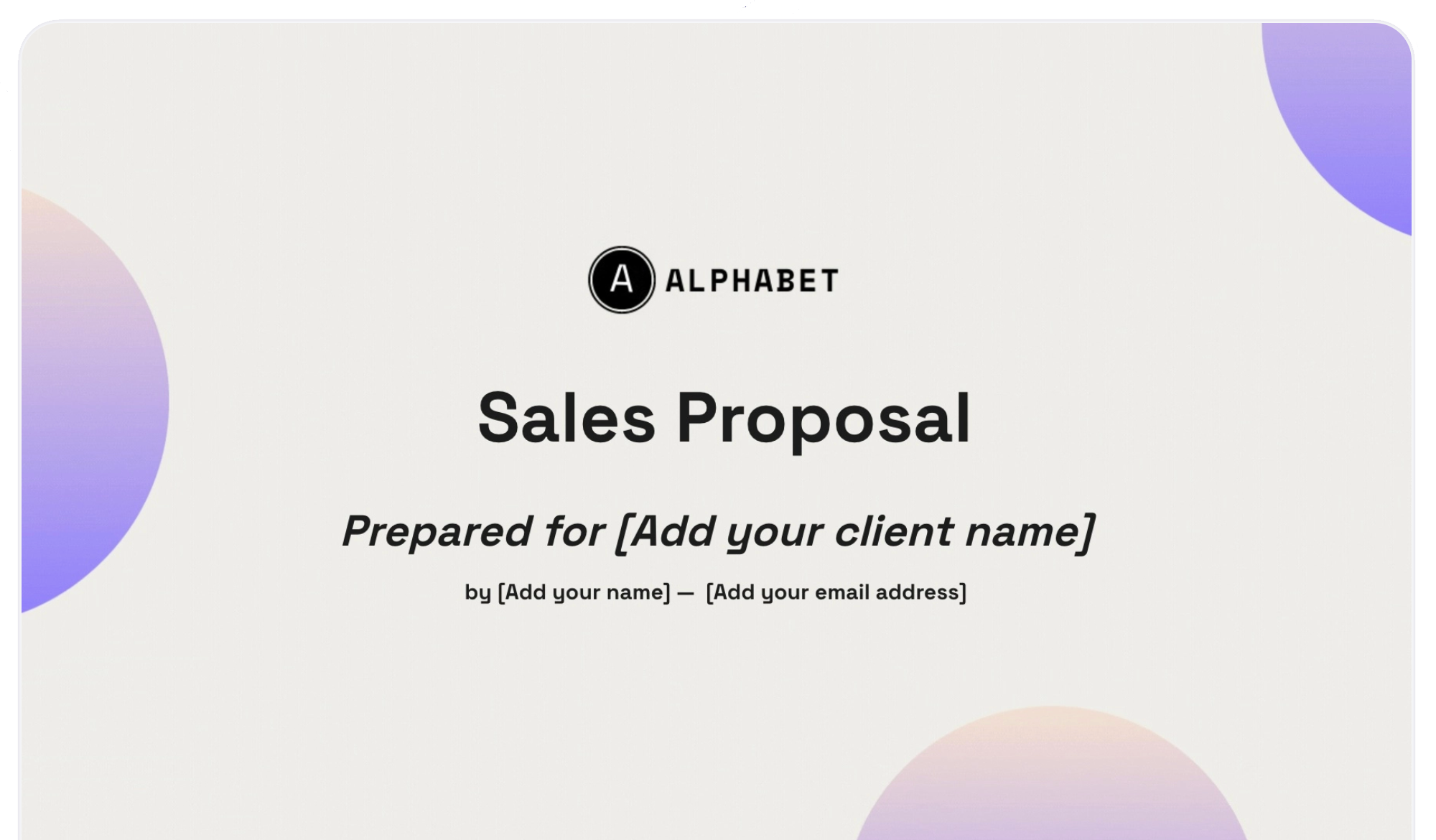
Having a properly trained, well-equipped sales team isn't a happy accident. A team of sales enablement professionals is likely working diligently behind the scenes to ensure that your front-line sellers have great content, battle cards, proposal templates, and collateral, and great training so they know how to use all of these things most effectively to close deals.
You might be wondering, if my sales enablement team is doing all of this work behind the scenes, how do I ensure their work is connected back to the value they're providing to the company? This is where key performance indicators come in.
While your organization may have really well-defined KPIs for the sales team, it's worth the effort of drilling down to create and monitor KPIs that are specific to the
Key takeaways:
- Sales enablement KPIs measure and improve sales productivity and effectiveness.
- SMART goals and clear measurements are crucial for sales enablement success.
- Important KPIs include increased win rates, lower churn rates, better lead quality, shorter sales cycles, and larger average deal size.
- For C-Suite, revenue growth rate, pipeline health, and customer lifetime value are key metrics.
- For CEOs, revenue growth rate, pipeline health, and customer retention rate are vital KPIs.
What are sales enablement KPIs ?
Sales enablement KPIs are the key performance indicators that help sales teams measure and improve their sales productivity. These KPIs can also be used to measure the effectiveness of your sales enablement team. For example, if your sales enablement team is charged with helping sellers improve performance, do more volume, or sell more quickly, these KPIs will help the team and company leadership understand if this is, in fact, the case. If your team already has a set of sales KPIs, there may be some overlap between those performance indicators and those that are set with the sales enablement team.
How to measure sales enablement success
Being able to measure sales enablement success (or, conversely, opportunities for improvement or additional sales support) boils down to having SMART goals and clear measurements of these goals that can be attributed to the activities your sales enablement team is undertaking.
For example, having a KPI of increased win rates may be too generic to tie back to the specific activities the sales enablement team is doing to help increase the win rate. The KPI could be around better training, more resources, or better tools and technology and HOW these initiatives help increase the win rate. For example, having your sales enablement team set up quarterly training with 95% participation could be a better indicator of performance. Similarly, having a more robust sales onboarding program could be directly tied to shorter runways for reps to achieve full sales productivity.
Important sales enablement KPIs to measure success
The most important enablement KPI will vary from sales organization to sales organization. For the purpose of this post, we'll look at some of the most common KPIs and then drill down by leadership team role. The most important KPI to the overall organization may vary by member of the leadership team and the parts of the business they oversee.
Increased win rates (or conversion rates)
This one might feel obvious, but winning more business is a clear sign of success. That said, it's worth looking at how you got here as a team. Things like having the right team members in the right roles and clear processes and tools that help automate and speed up your sales process may have contributed. This is why it's important to understand why you're winning more and look for ways to continue to build on this success. Your enablement program may have a direct correlation to your increased win rate, but you want to take a deeper look to ensure you understand why.
Lower churn rates
Lower churn rates may also be a big part of the equation and a key performance indicator to look at when trying to understand your sales team's success. When measuring sales impact, it's not enough that the team is signing up a lot of new customers or accounts, it's also important that these customers stay with you. Having increased win rates but also increased churn rates at an early juncture (like 30 - 90 days into a longer contract) is a red flag. It means your reps are closing deals (which sounds good), but they aren't the right deals for your business.
Better lead quality
Selling to qualified leads is a critical way to reduce the length of your sales cycle, increase your win rate, and generally help reps focus on the right opportunities. Better lead quality can also be a key metric used to understand how your enablement team is performing. By helping the sales (and maybe even marketing) team better define personas and zero in on opportunities, the total number of good leads coming into your sales organization should be increasing at a steady rate. It may level out as you get this really well dialed in, but better lead quality is definitely a metric you should be tracking.
Shorter sales cycles
Having a shorter sales cycle will allow your team to close more deals in a shorter period of time. Having a dialed-in sales process and all of the tools and resources needed to close a deal quickly will allow your sales team to dramatically increase their sales velocity. This is a good sign that your enablement efforts are paying off.
Larger average deal size
We all know that high ticket closing is lucrative for both sellers and their companies at large. Watching deal size increase over time is another key metric to help prove the success of your enablement team's efforts. Starting to track deal size and watching how it changes over time is a good indicator of overall sales performance in the market. In addition to conversion rate, increased deal size is another key indicator that needs to be carefully monitored over time.
The most important sales enablement KPIs for the C-Suite
For members of the C-Suite or the executive leadership team, many enablement metrics will communicate the success of the program or opportunities for improvement. While different leaders may focus on different KPIs based on the area of the business they oversee, these indicators are generally good ones to share with members of the C-Suite.
Revenue growth rate
Having a good understanding of the revenue growth rate can help senior leaders understand how much additional capital they might have to invest back in the business or return to shareholders. Having a forecast and then routinely reporting on real numbers can help leaders decide when it might be time to increase headcount, invest in R&D and new services, or increase the marketing budget. While these decisions aren't driven by sales enablement strategies, the results of the enablement team's efforts can be tied to both revenue and organizational growth.
Pipeline health
The health of your pipeline can be an enablement KPI that can help the leadership team with forecasting. Using the average length of your sales cycle and average win rate can help leaders understand how much business they can expect to see closed won in a given timeframe. For example, if your organization has a 60% win rate and a three-month sales cycle, they can use this information to determine how much they need to see in the pipeline in order to hit a certain revenue target. A healthy pipeline also demonstrates an effective sales and marketing team that is coordinating efforts to ensure there are plenty of prospects to move through the pipeline.
Customer lifetime value
Customer lifetime value can help executives make decisions into the future. Understanding how many customers the organization has and how much they'll spend over the lifetime of the contract can help give some insight into profitability and the financial health of an organization.
According to Ali Cudby, a customer retention researcher and author, "it costs six to seven times more to acquire a new customer than it does to retain current customers. Cudby notes that a 5% increase in retention can lead to improved profitability of 25% or more, and potentially a 95% increase in profits."
In addition to just understanding your customer's lifetime value, it's also important to watch for changes to the value over time. For example, if one year ago, your average customer lifetime value was $100,000 and now it is $125,000, and by 2025, you expect it to be closer to $150,000, that's a strong indication that things are moving in a good direction (as long as the number of customers you have is generally staying steady or increasing).
The most important sales enablement KPIs for the CEO
There isn't just one enablement KPI that your CEO should have an eye on; there are many KPIs that can give your leader insight into performance and help drive strategic decisions and communication to additional stakeholders like your board, investors, or partners. Some of the enablement metrics you should be regularly updating your CEO on include:
Revenue growth rate
For the head of an organization, the revenue growth rate is a good, high-level KPI to have a pulse on. While there are many factors that go into why the revenue is or is not growing, understanding how the company is doing is important for a leader to be able to make sound business decisions. If the revenue growth rate is stagnating or falling, its worth digging into to understand why - and how to get things back on track. While this may not be specifically tied to enablement efforts, understanding how the sales enablement team is supporting revenue growth is one critical piece of the puzzle.
Pipeline health
Understanding the health of the sales pipeline is another KPI that is vital for a CEO to understand. Besides the implications from an enablement standpoint of helping the sales team keep the pipeline healthy, this KPI can also give a glimpse into product-market fit and marketing and sales alignment.
Customer retention rate
The customer retention rate being high shows a CEO that not only is the sales team selling to the right customers but also that once customers come on board, there is a high level of customer satisfaction and customer trust has been built. The latter could also be attributed to the customer success team as well. This is why regularly looking at and reporting on the customer retention rate is a good idea.
Conversely, if the customer retention rate is not as high as you'd like it to be or you're seeing customer churn at specific points, you can look at your sales process and customer success plan to find out what is going on - and hopefully course correct before the issue becomes bigger.
Most Important Sales Enablement KPIs For CMO
When it comes to ensuring business outcomes are achieved, sales and marketing alignment are critical. Having some enablement KPIs that relate directly to the CMO's role can help to show lagging and leading indicators of successful alignment. These KPIs include:
Lead quality
Depending on how your organization is structured, having an enablement KPI around lead quality can be a strong signal that sales and marketing efforts are aligned. Having a consistently high level of qualified leads is a good sign that the marketing team is doing the right activities to bring the right customers to the sales team.
Conversely, if the lead quality is consistently poor, it's worth digging into to understand why this might be. Are sales and marketing misaligned? Is the ideal customer profile or persona not quite right? Are you not achieving product-market fit with the audience you're marketing to? Getting to the root cause of this as a marketing leader can help you course correct and ensure your team is on the right track.
Customer Acquisition Costs (CAC)
Understanding your customer acquisition costs is important for everyone, especially the marketing leader. Having this number be appropriate relative to the cost of your product or service and the customer's lifetime value is important. While in the early stages of your business, you may need to spend more money to increase brand awareness and attract new customers- this number should level out over time.
As the marketing leader, if you see your CAC is still too high, it's critical that you dig into what this is attributed to. Is it a competitive market? Is it that you're using expensive channels? The answer to these questions can help you determine if you're using your budget correctly and what steps you could take to get your CAC under control.
Conversion rates
Understanding conversion rates is one of the most important key metrics for the CMO. If leads are converting, it's a great indicator of not just enablement success but also that sales and marketing tactics are working. If the conversion rate is something that needs to improve, the CMO should be working with their team to understand why it is not at an acceptable threshold and what sales and marketing reps should be doing to help improve it.
Most important sales enablement KPIs for the CFO
While your finance leader may have a lot on their plate, understanding how sales and sales enablement translates to dollars for the organization may be one of the most important priorities. When having strategic conversations with finance, some KPIs should be top of mind, including:
Revenue growth rate
Understanding your revenue growth rate can help your CFO advise members of your leadership team about when might be the best time to make additional investments in the business. This could include staffing up to expand to different markets or lines of service or making an investment in your facilities or operations. Having a consistently steady revenue growth rate is a good sign that your sales team is performing well and that the product or service you offer is being well received in the market. It can also be a good sign that the business is ready to grow or expand.
Customer Acquisition Costs
Similar to your marketing leader, your CFO should also understand what it costs to acquire new customers. They will want to use this information when setting or allocating budgets to ensure they are giving the sales and marketing teams enough runway - and ensure they are seeing a return on the investment.
Contract Lifetime Value
Similar to understanding what it costs to bring in a new customer, your CFO should also have a good understanding of the lifetime value of your customers. This information can be extremely helpful when planning for the future and putting together financial forecasts. Knowing how much revenue to expect in the coming quarters and even the coming years can make it easier to think about next steps for the company.
Churn Rate
Another KPI that the CFO should be dialed into is your churn rate. If this rate is extremely high at a specific point in time, say, for example, after 3 years. Having this understanding can help the CFO put together the most realistic financial forecasts. That said, if you are seeing churn at specific points in the customer lifecycle, it's worth taking a team approach to trying to address and mitigate it. While all companies will experience some churn, having your finance lead understand when and how much to expect is a good idea.
Final Thoughts
Making an investment in a sales enablement program can bring many positive returns when the investment is structured correctly and key performance indicators are clearly defined. Ensuring your team isn't working on improving numbers when it comes to vanity metrics and is instead focused on enablement KPIs that matter is a high priority.
Remember to look at your overall business goals to determine where sales enablement can be the most supportive. These key members of your sales team should be providing support to help active sellers increase sales productivity, conversion rates, and quota attainment.
About the author

Marissa Taffer|Founder & President of M. Taffer Consulting
Marissa Taffer is the Founder & President of M. Taffer Consulting. She brings over 15 years of sales and marketing experience across various industries to a broad range of clients.
Frequently asked questions
Sales enablement KPIs are key performance indicators that help sales teams measure and improve their sales productivity. They can also be used to measure the effectiveness of your sales enablement team.
Sales enablement success can be measured by having SMART goals and clear measurements of these goals that can be attributed to the activities your sales enablement team is undertaking.
Important sales enablement KPIs include increased win rates, lower churn rates, better lead quality, shorter sales cycles, and larger average deal size.
For the C-Suite, important enablement metrics include revenue growth rate, pipeline health, and customer lifetime value.
For the CEO, important KPIs include revenue growth rate, pipeline health, and customer retention rate. For the CMO, KPIs include lead quality, customer acquisition costs, and conversion rates. For the CFO, KPIs include revenue growth rate, customer acquisition costs, contract lifetime value, and churn rate.




